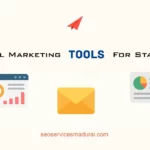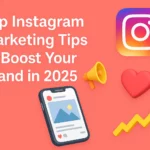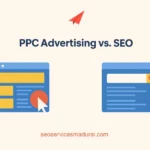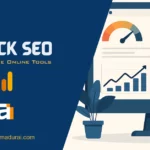In today’s digital age, having a strong online presence is essential for the success of any business. With so many competitors vying for attention, it can be challenging to stand out from the crowd. That’s where paid search advertising comes in. By leveraging the power of platforms such as Google Ads, businesses can reach their target audience and increase their online visibility. But, with so many options available, it can be overwhelming to know where to start. That’s why it’s essential to have a solid strategy in place to ensure that your advertising dollars are being spent effectively. In this article, we’ll explore the power of paid search advertising and provide you with tips on how to boost your business online. From choosing the right keywords to crafting compelling ad copy, we’ll cover everything you need to know to take your online marketing efforts to the next level. So, let’s dive in and explore the world of paid search advertising together!
The Benefits of Paid Search Advertising
Paid search advertising, also known as pay-per-click (PPC) advertising, is a powerful tool for businesses looking to increase their online visibility. With paid search, businesses can bid on specific keywords related to their products or services, and their ads will appear at the top of search engine results pages (SERPs) when users search for those keywords. But, what are the benefits of paid search advertising?
One of the main benefits of paid search advertising is that it allows businesses to target their audience with precision. For example, if you sell running shoes, you can target people who are searching for “running shoes” or “best running shoes” on Google. This means that you’re reaching people who are already interested in what you have to offer, making them more likely to click on your ad and make a purchase.
Another benefit of paid search advertising is that it’s highly measurable. With tools like Google Analytics, you can track the number of clicks, impressions, conversions, and revenue generated by your ads. This means that you can see exactly how your advertising dollars are being spent and make adjustments to your campaign as needed.
Paid search advertising is also flexible. You can set a budget for your campaign, so you’re never spending more than you can afford. Plus, you can adjust your bids and ad copy in real time, so you can respond to changes in the market or take advantage of new opportunities as they arise.
Understanding the Different Types of Paid Search Ads
There are several different types of paid search ads, each with its own strengths and weaknesses. The most common types of paid search ads are:
Text Ads
Text ads are the most basic type of paid search ad. They consist of a headline, two lines of ad copy, and a URL. Text ads are highly customizable, and you can adjust the headlines and ad copy to match the keywords you’re targeting. Text ads are also the most affordable type of paid search ad, making them a good option for businesses on a tight budget.
Display Ads
Display ads are graphical ads that appear on websites across the internet. These ads can be static or animated and can include text, images, and video. Display ads are a good option for businesses looking to increase brand awareness or promote a specific product or service.
Shopping Ads
Shopping ads are product-based ads that appear at the top of Google’s search results pages. These ads include an image of the product, a title, the price, and the name of the retailer. Shopping ads are a good option for businesses that sell physical products online.
Video Ads
Video ads are ads that appear before, during, or after a video on YouTube or other video-sharing platforms. These ads can be skippable or non-skippable and can be used to promote a brand or a specific product or service. Video ads are a good option for businesses looking to increase brand awareness or engage with their audience in a more interactive way.
Paid Search Advertising Statistics
Paid search advertising is a highly effective way to reach your target audience and increase your online visibility. Here are some paid search advertising statistics that demonstrate its power:
– On average, businesses make $2 in revenue for every $1 they spend on Google Ads.
– The average click-through rate (CTR) for a Google Ads text ad is 3.17% for the search network and 0.46% for the display network.
– 75% of people who find local, helpful information in search results are more likely to visit the physical stores.
– 52% of people who click on a Google Ads ad call the advertiser.
Setting Up Your Paid Search Advertising Campaign
Now that you understand the benefits of paid search advertising and the different types of ads available, it’s time to set up your campaign. Here are the steps you’ll need to take:
Step 1: Define Your Goals
Before you start your campaign, you need to define your goals. What do you want to achieve with your advertising? Do you want to increase sales, generate leads, or increase brand awareness? Having a clear goal in mind will help you create a more targeted campaign.
Step 2: Choose Your Keywords
Once you’ve defined your goals, you need to choose your keywords. These are the words and phrases that people will use to find your business online. Make sure to choose keywords that are relevant to your business and have a high search volume. You can use tools like Google’s Keyword Planner to find the right keywords for your campaign.
Step 3: Create Your Ad Copy
Next, you need to create your ad copy. This is the text that will appear in your ad and convince people to click through to your website. Make sure your ad copy is compelling, relevant to your keywords, and includes a call-to-action (CTA) that tells people what to do next, such as “Buy Now” or “Learn More.”
Step 4: Set Your Budget
Once you’ve created your ad copy, you need to set your budget. This is the amount of money you’re willing to spend on your campaign. You can set a daily budget or a total budget for your campaign. Make sure to choose a budget that’s realistic for your business and your goals.
Step 5: Launch Your Campaign
Once you’ve completed the previous steps, it’s time to launch your campaign. Make sure to monitor your campaign closely and make adjustments as needed to improve its performance.
Optimizing Your Paid Search Advertising Campaign
Now that your campaign is up and running, it’s time to optimize it for better performance. Here are some tips on how to do that:
Tip 1: Monitor Your Campaign Regularly
Make sure to monitor your campaign regularly to see how it’s performing. Check your analytics to see how many clicks, impressions, and conversions you’re getting, and adjust your campaign accordingly.
Tip 2: Adjust Your Bids
Adjust your bids for your keywords to make sure you’re getting the most out of your budget. Raise your bids for keywords that are performing well and lower them for keywords that aren’t generating a lot of clicks.
Tip 3: Improve Your Ad Copy
Continuously improve your ad copy to make it more compelling and relevant to your audience. Test different headlines and ad copy to see what works best.
Tip 4: Use Ad Extensions
Ad extensions are additional pieces of information that can appear in your ads, such as phone numbers, addresses, and links to specific pages on your website. Use ad extensions to provide more information to your audience and make your ads more compelling.
Paid Search Advertising Tips
Here are some additional tips to help you get the most out of your paid search advertising campaign:
Tip 1: Use Negative Keywords
Negative keywords are words or phrases that you don’t want your ads to appear for. For example, if you sell running shoes, you might want to exclude keywords like “women’s high heels.” This will ensure that your ads are only shown to people who are interested in what you have to offer.
Tip 2: Test Your Landing Pages
Make sure your landing pages are optimized for conversions. Test different layouts, headlines, and calls to action to see what works best.
Tip 3: Use Retargeting
Retargeting is a powerful tool that allows you to show ads to people who have already visited your website. Use retargeting to remind people about your products or services and encourage them to come back and make a purchase.
The Best Paid Search Advertising Platforms – Google Ads and Bing Ads
The two most popular paid search advertising platforms are Google Ads and Bing Ads. Here’s a brief overview of each:
Google Ads
Google Ads is the most popular paid search advertising platform, with over 3.5 billion searches per day. It offers a wide range of ad formats, targeting options, and analytics tools to help businesses reach their target audience and get the most out of their advertising budget.
Bing Ads
Bing Ads is Microsoft’s paid search advertising platform, and it’s a good option for businesses looking to reach a different audience than Google Ads. Bing Ads has a lower cost-per-click than Google Ads, making it a good option for businesses on a tight budget.
Conclusion
Paid search advertising is a powerful tool for businesses looking to increase their online visibility and reach their target audience. By understanding the different types of ads available, setting up a solid campaign, and optimizing it for better performance, you can take your online marketing efforts to the next level. Remember to monitor your campaign regularly, adjust your bids and ad copy, and use negative keywords and ad extensions to improve your results. With the right strategy in place, paid search advertising can help you boost your business online and achieve your goals.











